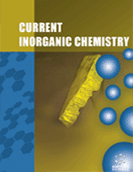Abstract
Background: The activated sludge treatments combined to the addition of ferric chloride is commonly used to eliminate nitrate and phosphate from waste water in urban area. These processes that need costly infrastructures are not suitable for rural areas and passive treatments (lagoons, reed bed filters…) are more frequently performed. Reed bed filters are efficient for removing organic matter but are not suitable for treating phosphate and nitrate as well. Passive water treatments using various materials (hydroxyapatite, slag…) were already performed, but those allowing the elimination of both nitrate and phosphate are not actually available.
Methods: The goal of this work is to identify the most suitable iron based materials for such treatments and to determine their optimal use conditions, in particular in hydrodynamic mode. The reactivity of the iron based minerals was measured either by using free particles in suspension or by depositing these particles on a solid substrate.
Results: Pozzolana, a volcanic rock, that is characterized by a porous sponge-like structure suits for settling a high amount of iron oxides. In addition, the experimental conditions enabling to avoid any ammonium formation when green rust encounters nitrate were also determined within the framework of a full factorial design. The dephosphatation and denitrification process is divided into two steps that will be performed inside two separated reactors. Indeed, the presence of phosphate inhibits the reduction of nitrate by green rust and the dephosphatation process must precede the denitrification process.
Conclusion: In order to remove phosphate, ferrihydrite coated pozzolana is the best materials. The kinetics of reaction of green rust with nitrate is relatively slow and often leads to the formation of ammonium. In this process, it is interesting to favor the accumulation of nitrite in a first step, these species react much more quickly with green rust and do not transform into ammonium.
Keywords: Water treatment, reed beds; iron oxide, ammonium, calcium.
 6
6

